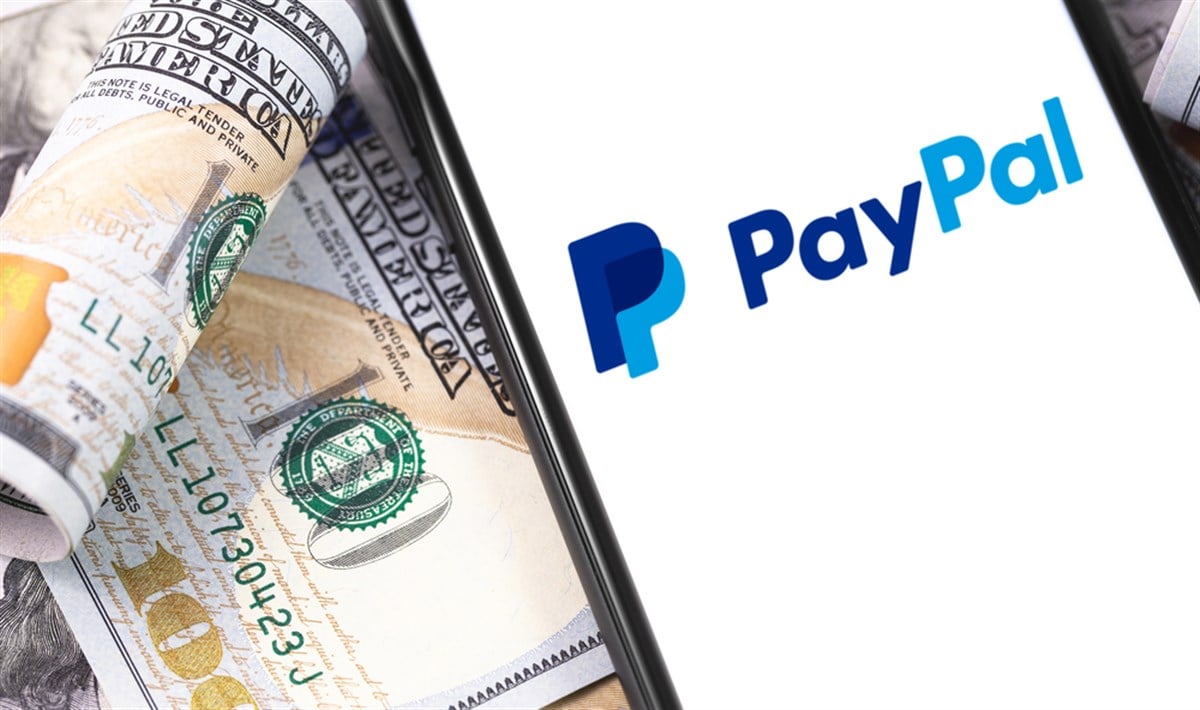
Every once in a while, investors can find stocks that belong to the hottest sector but haven’t quite become hot themselves. This time, the U.S. technology sector brought the nation’s stock indexes to all-time highs. While semiconductor stocks took the lion’s share of credit, others weren’t so lucky.
This includes PayPal Holdings Inc. (NASDAQ: PYPL), which fell behind the rest of the pack since it retraced up to 80% from its all-time high price of $310 a share in 2021. While markets may have had their own reasons to sell off shares of PayPal, value investors who know where – and how – to look may find that the stock is still worth the wait.
PayPal stock forms the classic market cycle pattern, going from a steady rise from 2017 through 2020 to massive hysteria during 2020 and 2021, followed by maximum pessimism in recent years. Now that the stock’s behavior has contracted more than ever before, it could be time for alpha-hungry investors to take a look.
Overview of PayPal’s Financial Performance
[content-module:CompanyOverview|NASDAQ: PYPL]
The reason these investors could – and should – start looking can be found in the company’s financials. Some bears may argue that PayPal’s brand is dying, calling Apple Inc. (NASDAQ: AAPL) and its Apple Pay platform the next one to take on the online payment processing sphere.
However, a company that grew its revenues by 8.7% during the past twelve months is still alive. Zooming in further, ensuring that this jump is not a fluke, quarterly revenue growth stood at 8.2% as well.
More to the heart of PayPal’s business, its operating income grew by 38% over the year and 31% over the past quarter. Though impressive on both accounts, what really matters to investors is the profit margin these operations generated.
The fourth quarter of 2023 saw 21.5% operating margins, up from 16.8% in the previous year. Improvements in operating margins were driven by lower costs (as a percentage of revenue) in customer support and operations as the company adopted artificial intelligence and other streamlining efforts.
More than that, PayPal’s effort to centralize its operations lowered its transaction and credit losses, typically brought on by processing payments outside the PayPal platform.
Boosting its net income margin up to 25.6% in the past quarter, an improvement over last year's 21.2%, gave way to a 61% growth in earnings per share (EPS). This jump alone should have been enough to return the stock to its former glory, yet bearish sentiment prevailed.
Sure, PayPal’s EPS of $1.29 is only a fraction of 2021’s $3.55. Still, markets must understand the effect that the COVID-19 pandemic had on business volumes at the time. After all, PayPal’s P/E valuation today makes it the cheapest it has ever been despite holding up its market positioning.
PayPal’s Market Position and Competitive Landscape
Investors may have been spooked after PayPal reported its first net user decline in history. However, this may not be as bad as the price action made it seem. Peaking at 435 million in 2022, net users for 2023 were 431 million, yet total payment volume rose by 15% during the same period.
Focusing on what matters, the company grew its revenues and financials across the board, all with a 1% decline in net users. Investors can consider this a needed cleanse after the booming pandemic periods when essentially everyone must transact online.
In a cleanse, those users remained ‘stickier,’ as shown by a net increase in transactions per account. In 2022, the average number of transactions per account was 51; it looks more like 58 these days.
Keeping the number of transactions in mind, total payment volume growth acts as the crystalizing factor that brings PayPal’s market together.
Financial performance and stickier users show up in PayPal’s market share. As a percentage of online payment platforms, PayPal holds a worldwide positioning of 45.4% (as of February 2024). Other competitors like Stripe – in second place – fall dismally to 18.2%.
Not even Amazon.com Inc. (NASDAQ: AMZN) could keep up with its Amazon Pay, as it only dominates 3.8% of this market today. PayPal’s sense of security and track record allows it to stay at the top of the space.
While PayPal may be the prince of online payments, the kings still shadowed it. Visa Inc. (NYSE: V) and Mastercard Inc. (NYSE: MA) both dominate the global payment networks, but they differ in one significant way.
PayPal’s business model is a closed-loop, two-sided network that controls transaction flow, giving customers security and accuracy.
These credit card giants differ by operating inside an open-loop network, where transaction flow is not controlled. Thus, the risk lies mainly with the customer. If someone purchases a fake or damaged product on PayPal, the platform could ensure the victim is taken care of with a typical credit card, but that may not be true.
Now, only some things are shiny. PayPal’s disadvantage over the credit behemoths is that customers can only transact with other users, creating a direct dependency on it and its transaction approval process.
Despite these added layers, PayPal’s market share shows the customer preference for safety and control.
Stock Performance and Historical Trends
After experiencing a wild ride from 2019 through 2021, PayPal stock fell dismally to a 2022 low of $69 a share. For the past two years, the stock has struggled to break outside its $60 to $80 range, a severely compressed price level compared to its pre-pandemic performance.
Investors could get excited about this on a more technical level. Just as the S&P 500 has its own volatility index (VIX), individual stocks have the average true range (ATR) measure. From 2020 to 2022, PayPal’s ATR hovered around 6%, marking a five-year high.
After the decline in stock in its current channel, its ATR steadily contracted to today’s 3% level. As it was cut by half, this technical indicator means that PayPal’s volatility is at a cyclical low, with an expansion approaching on the horizon.
The answer anyone is looking for is what type of event could bring this volatility back up, and a simple answer may be precisely what crashed the stock in the first place. In the third quarter of 2021, PayPal’s management issued some disappointing guidance figures for 2022.
At the same time, rising marketing and technology costs squeezed the company’s margins to levels not keenly taken by the markets. As these costs have lowered from 11% of revenue in 2022 to 9.6% in 2023, sentiment could be brewing again.
More than that, management could start issuing more optimistic guidance figures in the coming quarters, reversing the bearish effect initiated a few years prior. While speculative, it is undeniable that the stock needs a catalyst of this sort to bring its volatility cycle back up.
PayPal’s stock price is back to where it was nearly a decade ago; at the same time, the company’s EPS has grown at a compounded average growth rate (CAGR) of 12% during the period. Stock prices are typically driven by their underlying earnings, where the price-to-value disconnect gap widens for PayPal.
Impact of Global Economic Factors on PayPal Stock
PayPal is directly tied to the business cycle like its peers in the online payment space. Because the Federal Reserve (the Fed) lowered interest rates due to the COVID-19 pandemic, consumer activity soared to make small businesses and business-to-consumer (B2C) transactions rise.
As inflation got stubbornly high in the U.S., PayPal’s business saw a few advantages and disadvantages. For starters, PayPal carries $41.9 billion in funds owed to customers, a liability that inflation can eat away at, causing PayPal’s balance sheet to look more attractive.
At the same time, inflation causes PayPal’s fees to increase, as consumer discretionary purchases (payment volumes) help this platform collect higher revenue as a percentage of each transaction. Speaking of discretionary purchases, here’s a downside.
Now that inflation is coming down in the U.S. as a result of Fed interest rate hikes, PayPal's business is experiencing just the opposite effect. However, this isn't all bad news, as an inflation-choked consumer may have a new reason to start spending again.
More than that, markets have priced in their expectations for the Fed to start cutting rates again this year, restarting PayPal’s money machine from rising transaction volumes and the positive effects of continued inflation.
Analysis of Investor Sentiment and Market Forecasts
It may take some time before these economic realities set in, as market sentiment is nearly nonexistent for PayPal. Contracting volatility and a tight trading channel typically mean that markets have given up on a stock.
However, not everyone left PayPal in the dust. Knowing that the stock has some catching up to do, particularly after underperforming the Technology Select Sector SPDR Fund (NYSEARCA: XLK) by 50% in the past 12 months, Wall Street analysts see a $70.5 share price target for PayPal.
These price targets call for a nearly 15% upside from where the stock trades today. More than that, these same analysts project 12% EPS growth in the next 12 months, which seems a bit on the conservative side of the spectrum considering the 61% growth the company just reported.
To return to this double-digit growth, PayPal must shock analysts and shareholders. The good news is that this shock doesn’t need to be as big and wild as some may think, as the stock’s 16x P/E is the cheapest it has ever been in company history.
Even a good quarter with a few encouraging words in management’s guidance could be enough to get the stock walking in a new direction. After buying back $607 million worth of stock in the past quarter, management tells Main Street that the stock is cheap enough to buy at these prices.
These recent buybacks represent nearly 1% of the company’s market capitalization as a proxy for investors to follow. And there’s also a fundamental reason for these purchases.
As net asset value (NAV), computed as the company’s total assets minus total debt, PayPal’s ‘liquidation’ value is $75.8 a share. What value investors don’t wish to be able to buy a 45.4% market share at an 18% discount?
Future Outlook for PayPal Stock
It isn’t only the U.S. Fed that is building a tailwind for PayPal’s business; the global economy is now becoming more digitalized, calling for payment services like PayPal to enter the scene.
Customers and merchants may have other options in the market. Still, again, PayPal’s 45.4% market share reflects the loyalty and trust the brand commands. As the company keeps investing in customer support and development, PayPal will likely be the leading candidate for handling these coming volumes.
Even after crashing by 75% in 2022, Meta Platforms Inc. (NASDAQ: META) swiftly recovered to its all-time high price of $531. This recovery is due to markets realizing that Meta owns a significant chunk of the social media space, making it a no-brainer investment.
PayPal doesn’t have the reach or popularity of Facebook or Instagram, though fundamentally, it is an apples-to-apples comparison in that markets may miss out on a potential doubling – or even tripling – of their investment.




